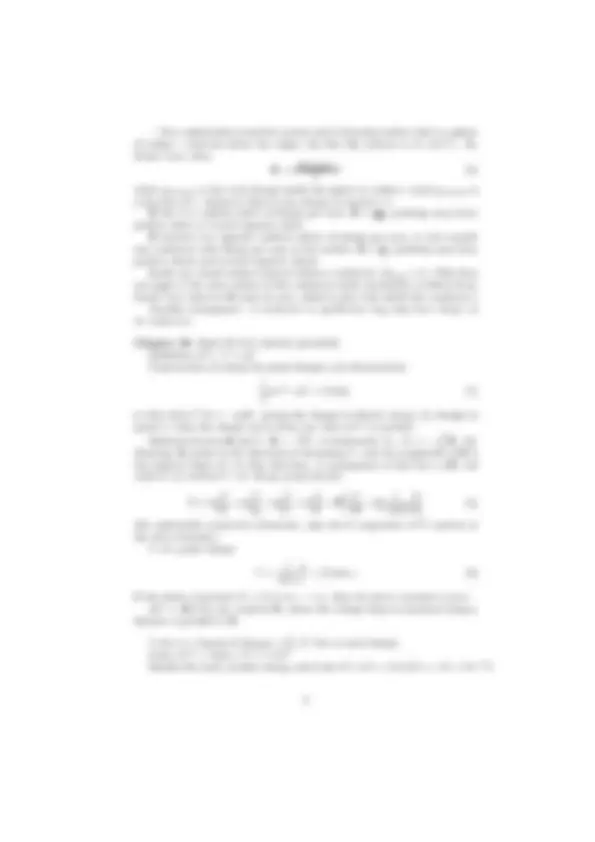



Study with the several resources on Docsity

Earn points by helping other students or get them with a premium plan


Prepare for your exams
Study with the several resources on Docsity

Earn points to download
Earn points by helping other students or get them with a premium plan
Community
Ask the community for help and clear up your study doubts
Discover the best universities in your country according to Docsity users
Free resources
Download our free guides on studying techniques, anxiety management strategies, and thesis advice from Docsity tutors
This study guide provides an in-depth review of the key concepts and formulas for the first test in physics 122, focusing on electric charge, electric field, gauss' law, and electric potential. It includes coulomb's law, the definition of electric fields, gauss' law, and the concept of electric potential. Students are encouraged to master the formulas and concepts presented in each chapter.
Typology: Exams
1 / 2

This page cannot be seen from the preview
Don't miss anything!


Physics 122 Test 1 study guide This is intended to be a study guide for your first test. It is suggested that you concentrate on the material in the study guide as you review each chapter.
Chapter 20: Read all of it (Electric charge, force, and field) Coulomb’s law for two point charges:
4 πǫ 0
q 1 q 2 r^2
ˆr (1)
Definition of electric field, F = qE, and Coulomb’s law for the electric field of a point charge
E =
4 πǫ 0
q r^2
ˆr (2)
where ˆr points away from the charge that is causing the force. Charge on an electron: −e, and charge on a proton: +e, where e = 1. 6 × 10 −^19 C. E due to a bunch of charges =
(E due to each charge)
k =
4 πǫ 0
Nm^2 C^2
ǫ 0 = 8. 854 × 10 −^12
Nm^2
Also, know how to break a vector into components, and how to go from components to magnitude and direction or the reverse. (The formulas for this are given in the sample cheat sheet, as well as in your book.)
Chapter 21: Read all of it (Gauss’ Law) Definition of lines of E, and what they can point to (negative charges) and point from (positive charges) Definition of electric flux, and Gauss’ Law
(closed) E =
E · ˆn dA = qenclosed/ǫ 0 (5)
For a constant E · ˆn, ΦE = (E · ˆn) × (Area) Things to remember: — E · ˆn measures the part of E that is pointing out of the surface. — ΦE represents the number of field lines going through the surface (and outward from the surface, for a closed surface). An inward field line counts as a negative outward field line. The units of ΦE are N m^2 /C, though, and not dimensionless (as a pure number of field lines would be). — A closed surface has an inside and an outside (it could be filled with water that can’t be spilled); an open surface doesn’t. Gauss’ Law applies only to closed surfaces, which are sometimes called “Gaussian Surfaces” in this context.
— For a spherically symmetric system and a Gaussian surface that’s a sphere of radius r centered about the origin, the flux ΦE reduces to Er (4πr^2 ). By Gauss’ Law, then:
E = k
qenclosed r^2
ˆr (6)
where qenclosed is the total charge inside the sphere at radius r (and qenclosed is a function of r, whenever there is any charge at nonzero r). E due to a uniform sheet of charge per area: E = 2 σǫ 0 , pointing away from positive sheet or toward negative sheet E between two opposite uniform sheets of charge per area, or just outside any conductor with charge per area on the surface: E = (^) ǫσ 0 , pointing away from positive sheets and toward negative sheets Inside any closed surface located within a conductor, Qtotal = 0. (This does not apply to the outer surface of the conductor itself, necessarily; it follows from Gauss’ Law wherever E must be zero, which is only truly inside the conductor.) Another consequence: A conductor in equilibrium may only have charge on its surface(s).
Chapter 22: Read all of it (electric potential) Definition of V : U = qV Conservation of energy for point charges q in electrostatics: 1 2
mv^2 + qV = Const. (7)
so that ∆(mv^2 /2) = −q∆V , giving the change in kinetic energy (or change in speed v) when the charge moves from one value of V to another.
Relation between E and V : E = −∇V , or backwards: Vb −Va = −
∫ (^) b a E^ ·^ dx. Meaning: E points in the direction of decreasing V , and the magnitude of E is the negative slope of v in that direction. A consequence is that lines of E and surfaces of constant V are always perpendicular.
∇ = ˆx
∂x
∂y
∂z
= ˆr
∂r
r
∂θ
r sin θ
∂φ
(For spherically symmetric situations, only the ˆr component of ∇ matters in the above formula.) V of a point charge:
V =
4 πǫ 0
q r
If the choice of ground (V = 0) is as r → ∞, then the above constant is zero. ∆V = |E|d for any uniform E, where the voltage drop is measured along a distance d parallel to E.
V due to a bunch of charges =
(V due to each charge) Units of V = Volts; 1 V = 1 J/C Besides the Joule, another energy unit is the eV: 1 eV = (1e)(1V) = 1. 6 × 10 −^19 J